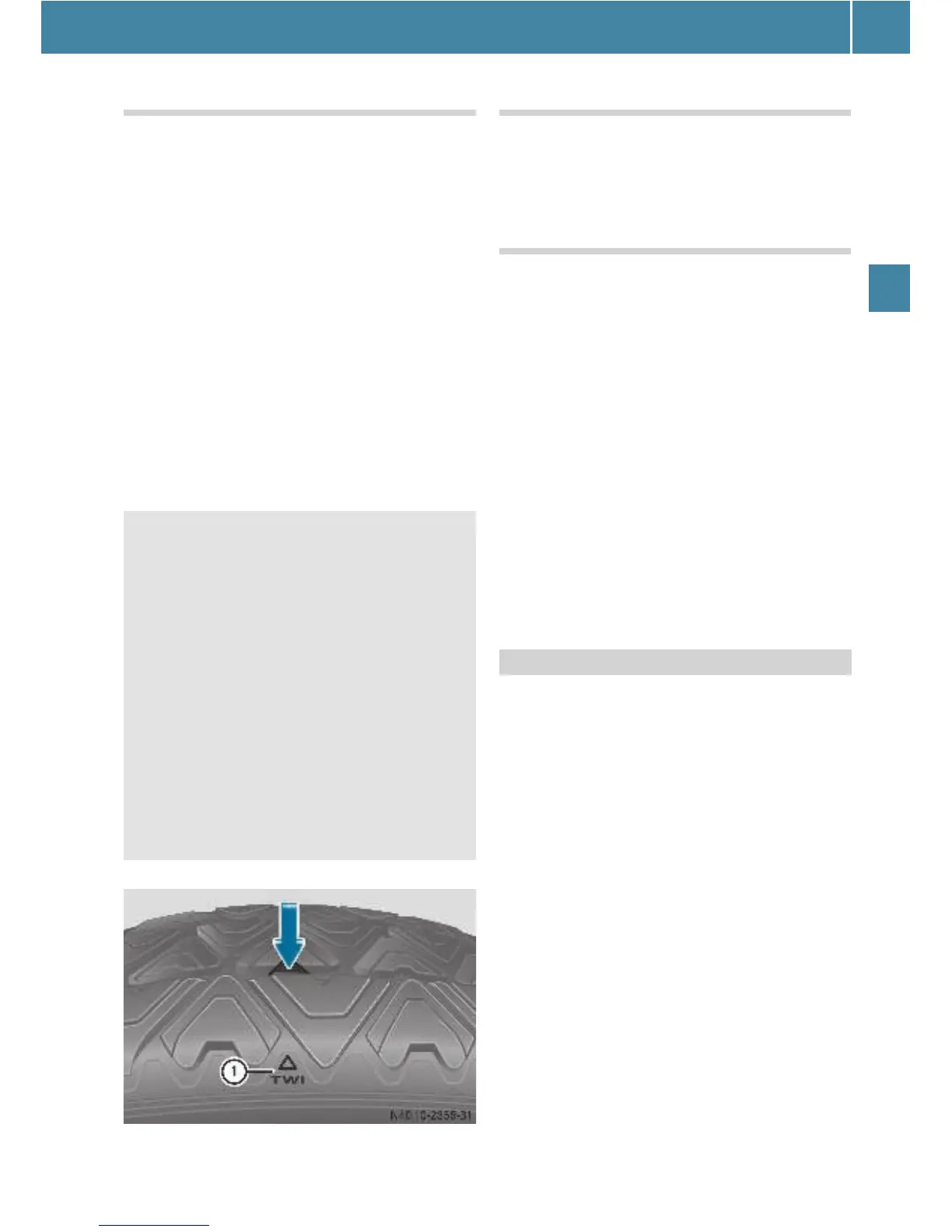Tires and wheels
169
Operation
Tread depth
Do not allow your tires to wear down too
far. Grip levels on wet roads are signifi-
cantly reduced at tread depths under
1
/
8
in (3 mm) for summer tires and
1
/
6
in
(4 mm) for winter tires.
Treadwear Indicators (TWI) are required by
law. These indicators are located in six
places on the tread circumference and be-
come visible at a tread depth of approxi-
mately
1
/
16
in (1.6 mm), at which point
the tire is considered worn and should be
replaced.
Recommended minimum tire tread depth:
O summer tires
1
/
8
in (3 mm)
O winter tires
1
/
6
in (4 mm)
Treadwear Indicator 1 appears as a solid
band across the tread.
Storing tires
! Keep unmounted tires in a cool, dry place
with as little exposure to light as possible. Pro-
tect tires from contact with oil, grease and
gasoline/diesel.
Cleaning tires
! Never use a round nozzle to power wash
tires. Using non-approved tires can have detri-
mental effects, such as:
O poor handling characteristics
O increased noise
O increased fuel consumption
Non-approved tires and rims may, under load,
exhibit dimensional variations and different tire
deformation characteristics that could cause
them to come into contact with the vehicle body
or axle parts. Damage to the tires or the vehicle
may be the result.
An intense jet of water can result in damage to
the tire.
Always replace a damaged tire.
An arrow on the sidewall indicates the in-
tended direction of rotation (spinning) of
the tire which means the wheel must be
mounted in the direction of rotation.
If a tire does not have an arrow on the side-
wall indicating the direction of rotation, the
wheel can be mounted either way.
i The Tire Identification Number (TIN) must al-
ways be visible on the outboard side of the tire.
! Spare wheels may be mounted against the
direction of rotation (spinning) even with a unidi-
rectional tire for temporary use only until the reg-
ular drive wheel has been repaired or replaced.
Always observe and follow applicable temporary
use restrictions and speed limitations indicated
on the spare wheel.
Have a spare wheel that was mounted against
the direction of rotation replaced with a regular
road wheel as soon as possible.
G Warning
Although the applicable federal motor safety
laws consider a tire to be worn when the
Treadwear Indicators (TWI) become visible at
approximately
1
/
16
in (1.6 mm), we recom-
mend that you do not allow your tires to wear
down to that level.
As tread depth approaches
1
/
8
in (3 mm) for
summer tires or
1
/
6
in (4 mm) for winter
tires, the grip characteristics on a wet road
are significantly reduced.
Depending upon the weather and/or road
surface (conditions), the tire traction varies
widely.
Direction of rotation
